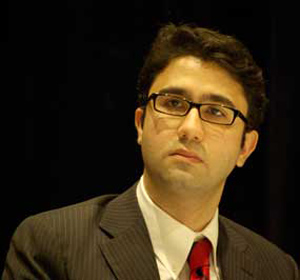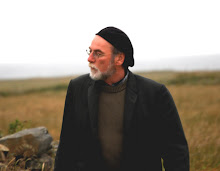Kaveh Shahrooz on Massacre88 - Canada Can Hold Khomeinist Murderers To Account
From my spot at the Ottawa Citizen.
During the Khomeinist counter-revolutionary terror of the 1980s in Iran, Ayatollah Khomeini's increasingly deranged regime rounded up and murdered at least 20,000 Iranians - mostly leftists, liberals, the secularist vanguard of the 1979 revolution, Kurds, Baha'i leaders and Ahwazi Arabs. During a specific three-month period in the summer of 1988, roughly 5,000 of Iran's political prisoners were systematically exterminated, 4,000 of them by hanging.
During the Khomeinist counter-revolutionary terror of the 1980s in Iran, Ayatollah Khomeini's increasingly deranged regime rounded up and murdered at least 20,000 Iranians - mostly leftists, liberals, the secularist vanguard of the 1979 revolution, Kurds, Baha'i leaders and Ahwazi Arabs. During a specific three-month period in the summer of 1988, roughly 5,000 of Iran's political prisoners were systematically exterminated, 4,000 of them by hanging.
Kaveh Shahrooz is a Toronto lawyer who served in the role of prosecutor to the Iran Tribunal, an initiative I wrote about here and here. When we last spoke, Kaveh was urging a greater Canadian role in marshaling the Iran Tribunal's evidence against regime's officials. At the time, Citizenship and Immigration Minister Jason Kenney - a good friend of Iranian refugees and a champion of Iran's minority groups, democrats and imprisoned journalists - held out some hope. "We support the effort at The Hague to bring Iranian officials complicit in serious crimes to account," he told me.
What follows is a guest post by Kaveh, on how to turn "support" into something with traction.
CANADA’S CHANCE TO EXPOSE A MASSACRE AND TO LEAD ON IRAN
This summer, while most Iran watchers will be following that country’s undemocratic presidential election, my family will be busy marking the 25th anniversary of the execution of my uncle and thousands of former Iranian political prisoners like him. Ever since 1988 when the execution occurred, my family has marked these grim anniversaries with growing despair. But this year we are cautiously optimistic that Canada’s parliamentarians will seize a unique opportunity and give us hope for justice.
Members of Parliament can demonstrate their firm commitment to accountability in Iran by adopting a soon-to-be-introduced parliamentary motion officially recognizing the 1988 massacre of political prisoners in Iran as constituting crimes against humanity.
In the summer of 1988, Iran’s then-Supreme Leader Ayatollah Khomeini issued a secret fatwa ordering the execution of any political prisoner who remained steadfast in his or her opposition to the Iranian theocracy. “The gentlemen who are responsible for making the decisions [to execute prisoners] must not hesitate,” Khomeini wrote in his edict. The regime’s top brass was ordered to eliminate opponents with “revolutionary rage and rancour,” a command they took to heart.
As a result, thousands of political prisoners, most of whom had already been imprisoned for years and subjected to unimaginable torture, were brought before tribunals (known among prisoners as “death commissions”) and were hanged after hearings which often lasted no more than one minute.
The killings were widespread, systematic, and pursuant to official government policy. The massacre therefore meets every definition of “crimes against humanity” under international law.
By the conservative estimate of Khomeini’s then-heir apparent (who became a whistleblower on this issue, lost his position, and spent the remainder of his life under house arrest), nearly 4,000 political prisoners were hanged that summer.
My uncle Mehrdad was among those prisoners. In 1980, when he was just twenty years old, he was arrested despite having never participated in any violent act against the government. Long after his arrest, when family members had a chance to see him again, he informed us that he had been sentenced to ten years in prison after a five-minute hearing. As a child, I’d sometimes visit him in prison and recall the signs of gruesome torture on his body.
The authorities stopped our prison visits in the summer of 1988. After two months without news of him, my grandmother was called to the prison to collect Mehrdad’s few belongings. We still don’t know exactly when he was executed or where his body is buried. We suspect that he may be in Khavaran, a large mass grave near Tehran that among Iranians has come to symbolize the savagery of Iran’s theocracy.
My family has never truly recovered from that loss. My grandmother and mother have both passed away since then, both with the unfulfilled wish of seeing justice in Mehrdad’s case.
Iranian leaders have gone to great lengths to deny the massacre and to keep it a secret from the international community. Even after a quarter of a century, the Iranian government refuses to allow families of the victims to erect memorials to their loved ones or to properly commemorate the killings.
This massacre has direct implications for Iran’s current abysmal human rights situation. Those responsible for the 1988 killings continue to hold positions of great power in Iran and continue to be complicit in ongoing repression. They have served as Cabinet Ministers and Supreme Court judges. One of them, Ismail Shooshtari, ironically served as Justice Minister for a long time. To date, absolutely no one has been held to account for these senseless killings. The culture of impunity symbolized by the 1988 massacre prevails.
This is why Iranian-Canadians like me came together earlier this year to form the Massacre88 Campaign, a grassroots initiative comprised of lawyers, academics, journalists, and human rights activists. Though we have different political leanings, we all believe that there can be no democratic future for Iran unless there has been justice and accountability for the crimes of the past. And we are all of the view that the first step to obtaining justice in the 1988 case is to move past the Iranian government’s conspiracy of silence and to make the world aware of this major crime.
Canada is uniquely situated to take the bold step of becoming the first country in the world to recognize the 1988 crimes against humanity. Not only is Canada home to one of the world’s largest Iranian Diasporas, but it leads an annual UN resolution condemning Iran’s human rights abuses. Furthermore, the Harper government consistently makes reference to human rights in Iran and it recently ended diplomatic relations between Tehran and Ottawa, in part, due to Iran’s deplorable human rights situation.
What better way, then, to show the world that Canada’s commitment to human rights in Iran goes beyond rhetoric than to cast a light on one of the worst crimes committed by the Iranian regime?
We hope that Canada’s lawmakers will display true leadership when this motion comes to the floor of the House.
For thousands of families like mine who have mourned for 25 years, the adoption of the motion is the difference between hope and continued despair.






0 Comments:
Post a Comment
<< Home